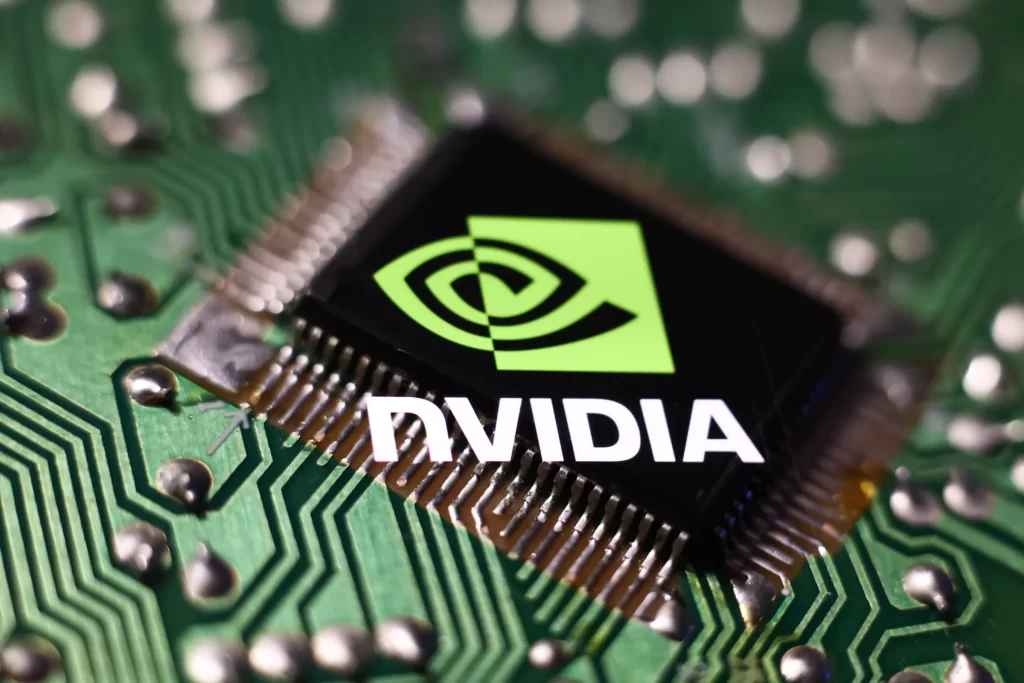
In the tech world, some companies innovate, and then there’s NVIDIA, which continually redefines what’s possible. Once known primarily for its high-end graphics cards for gamers, NVIDIA has transformed itself into a multifaceted powerhouse with its fortunes now inextricably linked to the explosive growth of artificial intelligence. Its journey isn’t just a story of a company adapting; it’s a saga of prescient vision and relentless execution, leading to a period of “continuous stellar performance” that has rewritten the rules of market capitalisation.

A Financial Story Told in Exponential Numbers
NVIDIA’s recent financial performance has been nothing short of spectacular. The numbers tell a story of a company that not only meets but consistently exceeds expectations. From a revenue perspective, the company has seen an astronomical rise. For the fiscal year ending in January 2025, NVIDIA’s annual revenue was a staggering $130.497 billion, representing a 114.2% increase from the previous year. This wasn’t a one-off event; the prior fiscal year (2024) saw an even more dramatic 125.85% jump in annual revenue. This trend of blistering growth is also reflected in its quarterly results, with revenues consistently soaring year-over-year by triple-digit percentages in recent quarters.
This financial success isn’t just about the top line. The company’s Net Income and Earnings Per Share (EPS) have followed a similar, eye-popping trajectory. For the fiscal year 2025, NVIDIA’s annual EPS was an incredible $2.94, marking a 147% increase from 2024.5. Net income also saw a parallel surge, growing by an astonishing 145% in the same period to reach $72.88 billion. These figures demonstrate not just increased sales, but a mastery of operational efficiency that’s translating into massive profitability.

The Engines of Growth: Beyond the GPU
While NVIDIA’s reputation was built on its gaming division, the true engine of its recent growth is the Data Centre segment. This division, which houses its AI and accelerated computing products, has become the company’s primary revenue driver. As the global push for AI and high-performance computing intensifies, data centres are in a race to build out the infrastructure needed to train and run large language models and other complex AI applications. NVIDIA’s flagship GPUs, like the Blackwell and Hopper architectures, have become the de facto standard for this new computational arms race.
The AI infrastructure market is where NVIDIA truly shines. Its CUDA (Compute Unified Device Architecture) software platform, a unified parallel computing architecture, has created a formidable ecosystem of developers and applications, establishing a high barrier to entry for competitors. This platform effect, often referred to as a “moat”, makes it incredibly difficult for customers to switch to rival products even if they offer a lower price point. This lock-in effect solidifies NVIDIA’s dominance and enables it to command premium pricing.
While the data centre and AI segments dominate the narrative, the other divisions are still significant. The gaming division, while no longer the fastest growing, remains a cornerstone of the business, providing a stable revenue stream from its GeForce RTX graphics cards. The automotive division is also poised for future growth, with NVIDIA’s DRIVE platform becoming a key player in the development of autonomous vehicles and in-vehicle AI.

Challenges on the Horizon
NVIDIA’s path isn’t without its challenges. The primary headwind comes from geopolitical tensions, particularly regarding U.S.-China export controls. The company has been forced to design specific, lower-powered chips for the Chinese market, and sales of these products have faced significant uncertainty and regulatory hurdles. This has created a volatile environment and a potential opening for domestic rivals like Huawei to gain market share in China.
Furthermore, competition is heating up. While NVIDIA holds a commanding lead, competitors like Advanced Micro Devices (AMD) are making significant strides in the AI accelerator market. More importantly, NVIDIA’s largest customers: the hyperscale cloud providers like Google, Amazon, and Microsoft, are actively developing their own custom AI chips (ASICs) to reduce their dependency on a single supplier and cut costs. This is a long-term threat that could challenge NVIDIA’s market dominance.
Despite these headwinds, analyst consensus and market sentiment remain overwhelmingly positive. Many analysts believe that the overwhelming growth in AI compute demand is the only thing that matters and that NVIDIA is uniquely positioned to capitalise on this trend. D.A. Davidson, for example, recently upgraded the stock, arguing that NVIDIA’s valuation may be “the least expensive direct investment in the growth of AI”. While some forecasts for revenue growth may be slowing, the company’s continuous innovation, exemplified by its rapid rollout of new architectures like Blackwell, keeps it one step ahead of the competition.
Conclusion
The outlook for NVIDIA in this new, AI-driven era is exceptionally strong. The company has evolved from a chip maker into a foundational provider of accelerated computing and a critical enabler of the AI revolution. With the demand for AI infrastructure expected to continue its explosive growth, NVIDIA is well-positioned to remain at the centre of the technology world for the foreseeable future. Its story is a testament to how a single company can not only ride a technological wave but also help create it, shaping the very landscape of modern computing.
Written by – Aman Madan
The post NVIDIA’s AI Ascendancy: A Story of Innovation and Growth appeared first on The Economic Transcript.


